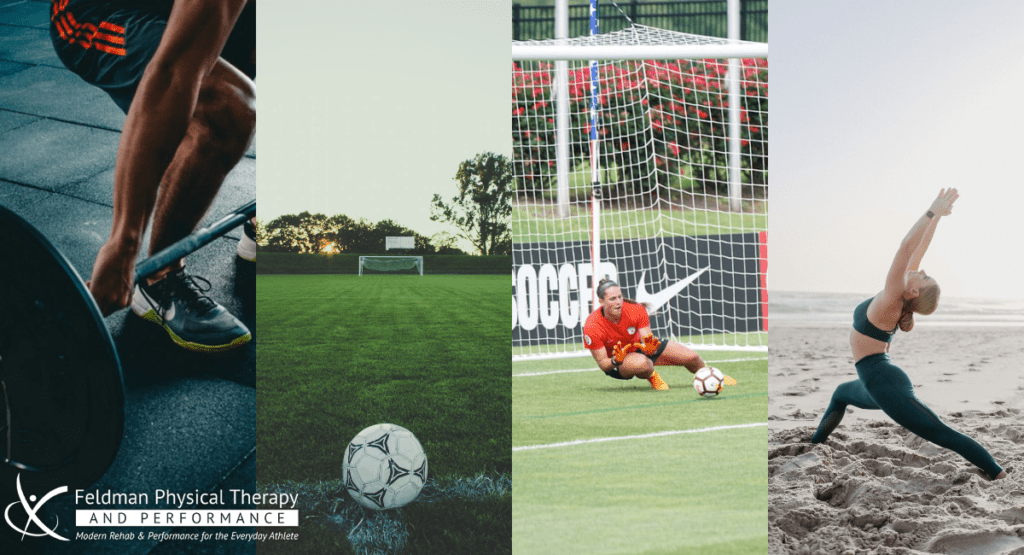A Reason for Every Season
The Forgotten Approach to Avoiding Injury
Winter. Spring. Summer. Fall.
Off-season. Pre-season. In-Season. Post-Season.
Does any of that look familiar? Did you know there are four weather-related seasons and four sporting seasons? In recent years we may be questioning the four weather-season theory in the northeast, but we should not forget the importance of seasons regarding athletic activities.
Have you noticed professional sports and college sports follow a four-season plan? Did you know the NCAA mandates things such as how many days you can use a ball when in the off-season? I used to have a love-hate relationship with off-season training in college. Why? It meant conditioning without the use of a soccer ball for one hour or more several times a week and increased time in the weight room. What I learned? Building athletic capacity is more than just playing the sport. It’s about making sure you’re well prepared in more than one way.
So, why is it that many of us push ourselves to be at the peak of our athletic performance all year long? Why are we making ourselves and children do the same intensity or frequency of activities day in and day out? It really is a good question.
Variability in athletic & sporting performance is extremely important when it comes to preventing injury. You should not be able to PR your 10K or half marathon pace all year long nor should your son or daughter be playing the same sport or multi-sports 5-6 days a week. Your performance goals should change throughout the year and here is a small glimpse into how.
Let’s start in the off-season. This is the period of time where competition in the main sport of choice is at a lull. It is a crucial time for athletes to truly develop increased athletic potential. What should be the focus of this phase? Building strength, improving endurance capacity, and decreasing risk for injury. It is a time where sport-specific activity should decrease, and time spent doing alternate activities increases.
Onto pre-season. This is the ramp-up phase starting a month (or more) before the competition season that is used for sport-specific preparation. It is a time where the amount of strength training that occurs decreases, and the amount of sport-specific activity increases. It is a time where an injury is often seen when in a state of under-preparation from the off-season. Hence why I am a stickler for off-season training! The goals: prepare well, maintain strength, & get in a positive mindset for the season.
In-Season. This is the height of the competition season. Strength training should not be forgotten, but at least 1-2 days of a lesser volume program is important to maintain the gains made during the off and pre-seasons. Sport-specific work will be high. Main goals: play-well and stay healthy while monitoring signs of poor performance.
Post-Season is the shortest season that occurs directly after the season. This is where the plan for the off-season begins. During this time the goal is to rest the body, nurse any wounds from in-season and allow some recovery time. Active recovery is okay, but you shouldn’t be trying to hit any athletic milestones during this phase. It is typically the short period of time youth athletes have when transitioning into other sports.
Seasons are for a reason. With the number of sporting related injuries on the rise, I think it’s important to ask one question. Why are these happening? Let’s really think about this. Often, too much repetition, not enough change, lack of education, one-sport specialization, mental fatigue, social stigmas, and the aim for perfection definitely play a part.
On a side note, I know that “one-sport specialization” has been a huge topic of debate lately. I recently read a post from a fellow Physical Therapist, Mike Reinold, and his quote hit the nail on the head: “Note to parents: When we said youth athletes should play multiple sports and not specialize too early, we didn’t mean play all these sports simultaneously all year long.”
Take this quote to heart, folks. Adults nor children are meant to be multi-season, multi-sport machines. In the past, basketball was known as a winter sport, cross-country and soccer were known as fall sports, and baseball and softball were known as spring sports. I’m pretty sure with many of the athletes I work with, all these sports are year-round sports. I’m not going to dive into the statistics here, but I’m pretty sure during those times we didn’t nearly see as many injuries as we do today.
Use a seasonal approach to the best of your advantage. I know it is not always easy to figure out, especially if your child is a multi-sport athlete, so let us help. If you have any questions about this, don’t hesitate to reach out!
Ashley Witson, PT, DPT
